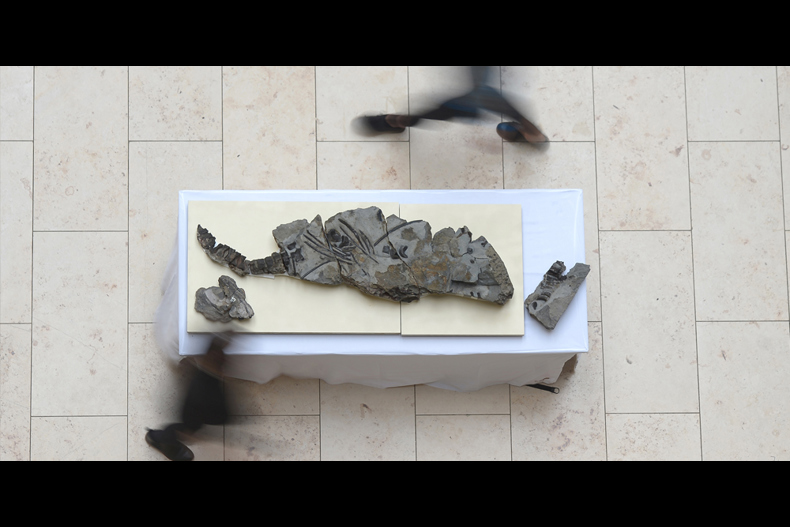
SSE is delighted to be playing its part in bringing the Storr Lochs Monster to life. Allan Gillies and his late father Norrie both believed that their fossil should receive the public attention it deserves. I’m proud that both men are part of the SSE family.
We are also extremely grateful to the University of Edinburgh and National Museums Scotland for providing the expertise that will analyse the fossil and give us a real insight into how such ichthyosaurs lived during Middle Jurassic times.
The story of the fossil find has certainly captured the media’s imagination, with the Storr Lochs Monster making waves on both sides of the Atlantic. Allan Gillies completed interviews with US-based National Geographic and USA Today titles as well as Scottish media outlets such as STV and BBC Scotland. I hope Allan has enjoyed his chance to tell the world about the Gillies family connection with the fossil. He’s a great ambassador for SSE.
The fossil was found by Norrie Gillies in 1966 on Skye, near one of our most remote hydro power stations, Storr Lochs, which comes with its own 400 feet funicular railway. Norrie Gillies was its station manager. He was responsible for providing electricity to the island: a responsibility taken so seriously there was an alarm connected from the station to his house.
If there was a problem he would venture out in all weathers, to make sure his fellow islanders had their power back. It is men and women such as Norrie who made a genuinely positive difference to the communities in which they live and work. I’d like to think such an approach still holds true today.
The Storr Lochs power station is currently being refurbished. After over 60 years of service we’re investing so it can provide power to the people of Skye for another 60 years. Norrie could indulge his passion for fossils thanks to the unique topography and rock formation of Skye. Likewise SSE can only generate clean energy from our hydro schemes, such as Storr Lochs, because of Scotland’s abundance of hills, rivers, lochs and of course, plentiful rainfall too.
This fossil could prove to be one of the crown jewels in Scotland’s Jurassic history. So our deepest thanks go to all those involved in bringing this special fossil to life.


